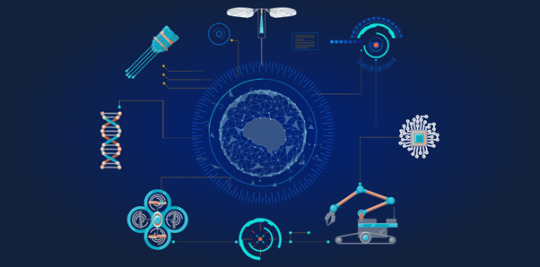#regulatingAI/MLinSaMD
Explore tagged Tumblr posts
Text
What is the FDA’s approach to regulating AI/ML in SaMD (software as a medical device)?

As the quote goes, “Necessity is the mother of invention.” Ironically, we don’t know who invented that quote. It became an amalgam of people from Plato to a 19th-century theologian.
According to the FDA’s site, their first Medical Device approved was in 1976 through their CDHR division (Center for Devices and Radiological Health) per their 21CFR Parts 800-1299. As we know, medical devices fall into three categories, from low risk to high risk: Class I, II, and III
Per the Int’l Med Device Regulators Forum (IMDRF), the need for regulating SaMD, this new form of med device, came about as long ago as 2013, again through an amalgam of regulated elements within the med device world.
“SaMD” even reaches as far back as the 60s with Lockheed’s consideration of getting the first computerized information-handling system in the hospital sphere.
And do we know who the first company was to be approved by the FDA as a SaMD? I’m sure there was a hybrid that led up to that, and my guess is it’s archived somewhere, but my research didn’t come up with a specific name, but rather several SaMD firsts:
• Pacemakers • X-rays and MRIs • Bedside monitors • Urine analyzers • Glucometers • Spirometers
The FDA had a tall order to decipher regulatory compliance with this new hybrid. And companies in the SaMD space had to figure out how to manage regulatory affairs per the FDA.
Thanks to SaMD and other inventions, Artificial Intelligence (AI) and Machine Learning (ML) are pervasive in nearly everything we do now. Are Alexa, OK Google, and Siri listening and learning? Absolutely. Is their AI helping us with more targeted options for buying, listening, and purchasing… even routing us to avoid traffic? Definitely. Conversely, have you ever looked up airfare, car rentals, and hotels, only to find out after your third or fourth search that the prices went up for some reason…on the same day? Hmmm. What changed that? Supply and demand…AI/ML interpreted your multiple searches (and others) as increased demand, so they bump up the price a bit more or a lot more. This “encourages” you to buy quicker. Maybe using Incognito or an anonymous site helps? What are your thoughts?
Would SaMD do the same? Not unless the developing company wanted to violate HIPAA compliance and all kinds of regulatory violations.
For some guidance, per Deloitte, here are some Is and Is Not examples:
What is and is not SaMD?
SaMD
Software that can determine the proper drug dose for a patient, given personalized patient data
Software that can detect and diagnose a stroke by analyzing MRI images
Software that can track the size of a mole over time and determine the risk of melanoma
Software that draws on data from other digital devices to determine risk factors associated with epileptic seizures
Not SaMD
Software that operates a pacemaker
Software that drives or controls an infusion pump’s motors
Electronic health record systems
Software in the machines that assemble medical devices
In one of my previous blogs, I mentioned that Apple, which started in 1976, hit it big with its desktops, but even bigger more significant with their iPhone innovation. That iPhone, coupled with the right software, became one of the forefront integrators of SaMD. Suddenly, eyes were opened to a world of information, whether on our wrist or transported electronically to the doctor. Abruptly, our eyes opened to a universe of data, accessible on our wrist and to be shipped electronically to our primary care physician.
Thanks to necessity, we can live healthier and longer and invent more!
#regulatingAI/MLinSaMD#regulatingSaMD#FDAregulations#FDAregulatorycompliance#FDAregulatoryaffairs#artificialintelligenceinsoftware#machinelearninginsoftware#SaMD#softwareasamedicaldevice
0 notes
Link
Investigating the contemplations being made by FDA for a proposed framework to regulate artificial intelligence (AI) and machine learning (ML) in software as a medical device (SaMD).
#regulatingAI/MLinSaMD#regulatingSaMD#FDAregulations#FDAregulatorycompliance#FDAregulatoryaffairs#artificialintelligenceinsoftware#machinelearninginsoftware#SaMD#softwareasamedicaldevice
0 notes